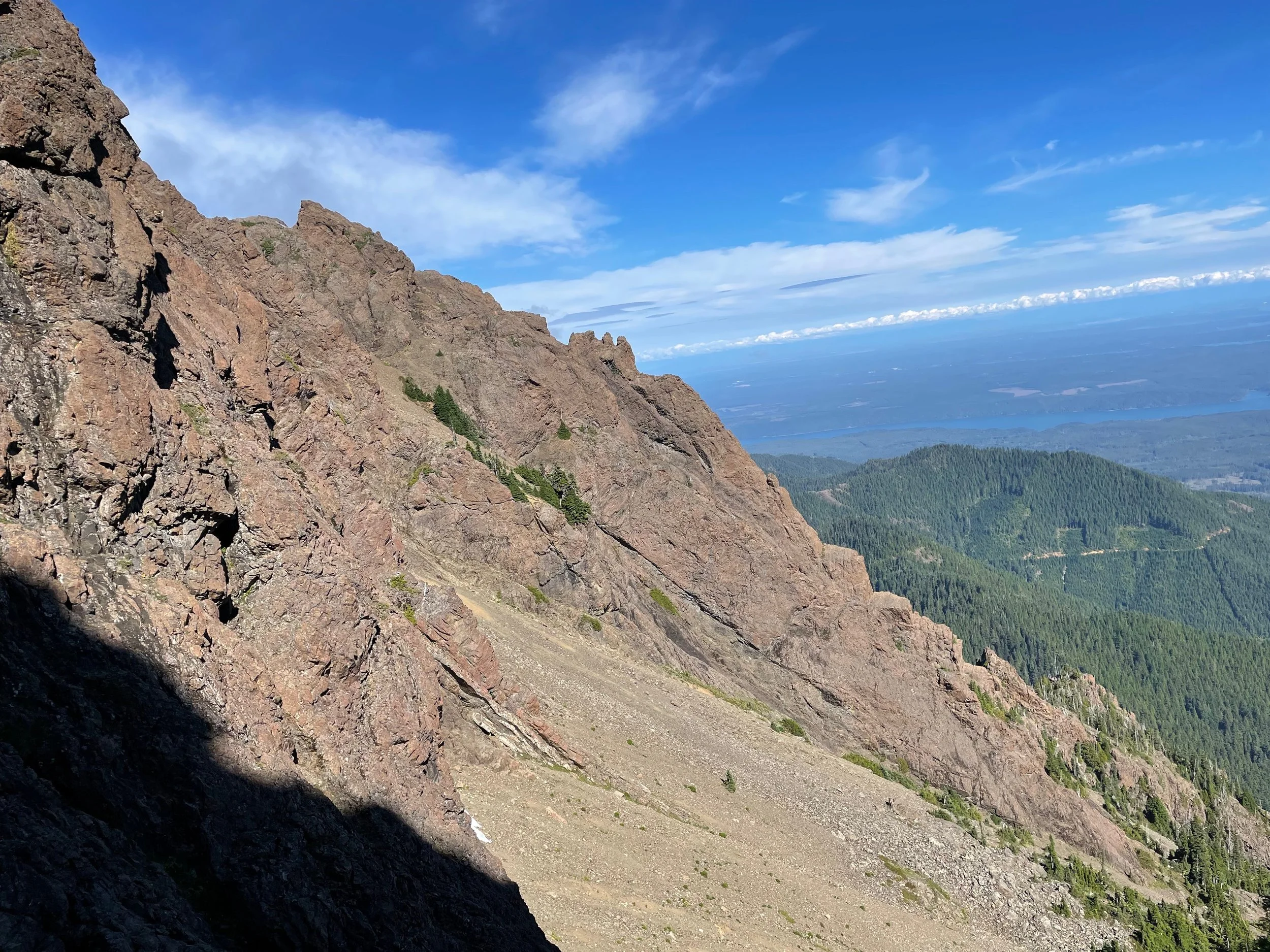Mt Washington's SE Ridge - Alpine Climbing in the Olympic Range
I climbed the SE Ridge of Mt Washington for the Fourth of July weekend. A 2.5 hour drive from Seattle, equivalent to anything in the Cascades. Here’s the beta:
Mt Washington (6255’ / 1907m) SE Ridge, III 5.7
The Southeast Ridge of Mt Washington rises sharply from the lower flanks of the mountain, a prominent buttress when viewed from the Forest Service road below and from other locations south and east.
Route 3: SE Ridge. Route 1: Descent. Image: Olympic Mountains: A Climbing Guide.
Gear. A light alpine rack is sufficient. Expect to place 1-5 pieces of protection on any pitch, and building most anchors with gear. Note: We did not find very many opportunities for slinging horns/blocks (perhaps three instances) as described in the guide book. A rack of cams #0.3-#3 and stoppers 4-10 (Black Diamond sizing); 4 alpine draws/shoulder slings; 2 quickdraws; 2 double shoulder slings. A spare cordellette and rappel ring is also advised, in case either rappel anchor needs to be replaced.
Rope. This route is also ideal for a shorter lead line and separate rappel/tag line. We climbed the entire route with 40m of a 70m rope, and 35m was more rope than necessary for the rappels: a 60m rope would have easily been adequate. If I were to repeat, I would use a 40m lead line and pack a 30m rappel line - the rappel line is only necessary twice (perhaps even once). Our 70m 9mm rope weighed approximately 10 lbs. My current 40m lead + 30 rap line combination weighs 6lbs, and requires less faffing with.
Drive. From Lake Cushman or the Hamma Hamma (say that out loud and try not to smile ;) ) village, turn onto NFD 24 and then onto NF 2419. Pass the Lower Mt Ellinor Trailhead and the turn-off for NF 014/Upper Mt Ellinor Trailhead. Soon after the NF 014 junction (almost in sight) and before reaching Big Creek, the road has been closed - this is the start of the approach.
Mt Washington SE Ridge, viewed from the South at the end of the road and the trail head. The Shield Wall is the prominent hight point in the photo - the subsequent towers, final headwall, and summit are foreshortened but visible. The descent trail exits the woods just off-camera to the left.
Approach. Time 1:00, starting elevation at 3000’. Hike on the old road for no more than 5-10 minutes, crossing Big Creek. Just as you turn the corner and leave Big Creek behind you, look for a distinct trail just to the right of a small stream that disappears under the roadbed. Follow this trail up, reaching the rock rib after 800’ of gain (ca 3800’). The trail leaves the ridge after 1200’ gain (ca 4200’) traversing several gullies. Just before the trail reaches the last gully, it does a few short switchbacks to stay high and hub a cliff - if it seems you need to hike straight up a loose, scree-filled gully you’ve gone too far.
After gaining 1600’ elevation (ca 4600’) you’ll enter the small bowl below the Shield Wall. If one was willing to carry bivy gear up and over, this would be a wonderful place to spend the night. At the base of the Shield Wall, a distinct gully ascends up and left to a notch at the wall’s left corner, ca 4850’.
Note: 3 July 2020, the gully was still snow choked, making for slow scrambling up the moats on either side. We reached the notch in 1:45, after this and a bathroom break. In drier conditions and without a toilet stop, I think it’s reasonable to believe the approach is 1:00-1:15.












